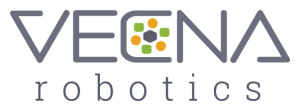The labor shortage for distribution, warehousing, and manufacturing organizations started long before the 2021 “Great Resignation” of employees voluntarily leaving their jobs. In fact, U.S. manufacturing is expected to have 2.1 million job vacancies by 2030.
For these organizations that are crucial to our livelihood, technology has been hugely impactful in not only enabling better throughput for companies and increased quality of products for consumers, but it has also significantly impacted job retention and satisfaction for factory workers – here’s how.
Why is there such a strain?
There are roughly 5 billion pallets in circulation every day worldwide. In the U.S. alone, the industry relies on more than 4.5 million human operators to move these pallets. The problem? These jobs are repetitive and mundane so in a competitive job market, these positions can be hard to fill and have high turnover rates. Many humans prefer to take on more complicated tasks with creativity and problem solving.
While robots are well suited for simplified tasks like transporting goods inside a factory, less than 10% of warehouses currently utilize automated equipment, like self-driving forklifts.
What is a self-driving forklift?
Self-driving forklifts, otherwise known as Autonomous Mobile Robots (AMRs), are intelligent fork trucks powered by technology. Think of the pallet handling industrial trucks that are used in a warehouse setting to lift and move materials, but with the smarts to operate independently without a human operator.
One human worker can oversee the work of several self-driving forklifts at one time, so inside the warehouse robots can help support human workers significantly by independently executing tasks like:
- Moving finished goods to and from conveyors and wrappers
- Moving lightweight trash, dunnage, and empty pallets off the production floor
- Moving goods to and from staging lanes and put-away locations
- Delivering parts to manufacturing assembly lines, putting away loads from warehouse receiving and transporting oversized packages throughout distribution centers
- Clearing dock doors quickly and efficiently
Will the robots take my job?
Think of it like this – when the sewing machine was invented it didn’t reduce jobs, it made people more efficient. Autonomous equipment does the same thing for people working in warehouses.
So, despite the concerns that some may have over technology’s impact on jobs, technology is actually driving the development of the job market for manufacturers by introducing new roles and making work-life better for humans.
By fulfilling the mundane, dirty and dangerous jobs humans were once tasked with, technology enables workers to find more fulfillment by upskilling and pursuing new opportunities – sometimes even alongside these innovative solutions by working with robots to complete tasks.
Not to mention, intelligent equipment can work three shifts continuously around the clock. This can help operations run more effectively and during the less desirable shifts to allow organizations to extend operations into hours that had previously not been accessible due to lack of available staff.
What are the other benefits?
The data being collected by automation solutions is also furthering innovation to aid humans. These intelligent forklifts are connected to most warehouse management systems and work to improve workflows to reduce wasted downtime. With more insights into what works and doesn’t, and a real-time pulse on manufacturing organizations overall, operations managers can pinpoint the best use of human creativity and skill. This is a significant area for career opportunities for those with an interest in manufacturing, supply chain, and logistics.
In fact, after intelligent equipment is adopted, new positions are often created in those same facilities for humans that are more sought after – positions with titles like “Robot Manager” or “Robot Expert.” People are often more satisfied with these roles and they can come with a higher wage too, together helping to reduce turnover rates and lessen the frequency of costly training.
How do I get started with intelligent equipment and how do I know if they’re right for my organization?
Starting your automation journey can start with a call. Our team is here to help. We start by learning about your facility, needs, and workflows to identify your unique requirements before offering customized solutions.
___
This post was originally published on the Vecna Robotics blog.




